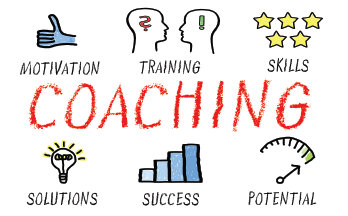
Adobe on Alameda, with Sage (oil), by Ralph C. Williams Jr.
Although providing feedback is often discussed as separate from teaching, it is the most important teaching we do as clinician-educators. Whether attending on the inpatient consult service or precepting in the clinic, providing direct feedback is the most effective way to help fellows advance their skills.
Feedback, however, is only as good as the giver makes it and only as welcome as the receiver perceives it. It’s all too easy to disregard the recommendations of an untrusted source, and learners often aren’t sure when they’re receiving feedback, despite teacher perceptions of giving frequent feedback.1
Fortunately, both giving and receiving feedback are skills that can be honed over time. In this overview, we provide you with the tools to create a feedback culture, deliver effective feedback, clarify the distinction between formative and summative feedback, and shed light on the best way to solicit feedback from others.
Promote a Feedback Culture
Culture is critical. Getting it wrong will stifle feedback and learning, but getting it right can catalyze growth. Each faculty member has a responsibility to promote a culture of feedback.
Adopting a growth mindset is essential to this process. This concept encourages individuals to frame challenges as opportunities, seek modifying feedback and recognize that intelligence and talent are dynamic, not defining, qualities.2 The alternative is a fixed mindset, in which challenges are avoided, modifying feedback is resisted, evaluations are perceived as judgments, and intelligence and talent are viewed as static, defining features.
Bearing this in mind, you should help struggling fellows see failure as opportunity and acknowledge your own areas of weakness to normalize the growth process (e.g., “I remember how much I struggled with learning the synovitis exam when I started fellowship.”). Recognizing and admitting one’s own shortcomings promotes humility, flattens hierarchies, forms connections between team members and lays the groundwork for a healthy feedback culture.
Recently, feedback literature has shifted its focus from the giver of feedback to the feedback dyad (giver plus receiver), highlighting the relationships essential for effective feedback. Telio et al. identified parallels in psychology, in which research on the therapeutic alliance demonstrated that “expert insight alone (i.e., unidirectional therapist to patient communication) is insufficient to evoke change in patients” and that it was the “client’s perception of the relationship” that was most important to determining if a therapist could promote change.3
Telio et al. elaborated on an analogous “educational alliance” between supervisor and trainee, in which the quality of the relationship is examined from the trainee’s perspective and rooted in a shared understanding of performance, goals and subsequent action plans.3 Understanding that successful feedback is far more about your relationship with a trainee than it is about the exact words and messages you deliver is an essential and underappreciated perspective for all supervisors.
To be a great teacher and mentor, it can be enormously helpful to adopt the skills and practices of a coach, who is adept at drawing out the best in even the most advanced learners. Coaches of athletes or musicians provide incessant feedback, which is rarely perceived as a value or character judgment, largely because coaching connotes shared goals, mutual engagement and partnership with a dedication to performance maximization.4 The coaching model encourages the learner to reveal, rather than hide, weaknesses and to identify opportunities for improvement, and the coach tracks progress and provides guidance to promote improvement.
To implement these ideas, meet with your fellows and co-create goals before you begin working together. Promote the concept that you are forming “an alliance” or that you are serving as their “coach.” Make clear that your priority is their improvement, and that feedback is a critical component. Start a dialogue and negotiate a plan forward. Both you and your fellows will be grateful that you did.
Ingredients of Effective Feedback
Giving feedback is a skill that deserves practice and conscientiousness. Here are some key points to enhance your efficacy.
Ensure you are in an appropriate setting, both physically and psychologically. Find a place that is quiet and private, where you both can feel vulnerable. The setting should also be one of psychological safety, established early in the relationship, in which admitting weaknesses and acknowledging failures is okay.
On my first rotation in rheumatology as a medical student, I asked if it would be okay to go to lunch. My supervisor said, “Michael, this is rheumatology,” and smiled reassuringly. Myriad ways exist to make learners feel welcome and establish psychological safety. Find the ways that feel most genuine.
Timing is key. Did your fellow just get three new consults or finish a long clinic day with several notes to write? If so, it may not be the ideal time for feedback. If you notice they are struggling in the moment, make a physical or mental note and return to your note for feedback later. At the beginning of a rotation, set expectations that you will be providing feedback and hope to receive specific feedback as well. During this conversation, you can ask your trainee about preferred and off-limit times for feedback.
Make your feedback specific. It is extremely important to comment on behaviors and actions that you observed (e.g., “Based on our encounter with Mr. Jones yesterday, I noticed you didn’t have a robust schema for diffuse lymphadenopathy.”) rather than on generalized personal characteristics (e.g., “You don’t seem intellectually curious.”). This provides your trainees with objective data they can correct, as opposed to a judgment about their intentions based on your interpretation of their behavior and actions.
It can be difficult to remember particular moments to reflect on, however, so develop a system to track memories of your time working together. Some faculty find it helpful to keep a running list of moments on their phone’s “Notes” application, while others prefer pen and paper. Sometimes reviewing text threads between you and a fellow can also elicit memories of specific patient encounters.
Feedback should include a mix of reinforcing and modifying feedback. Reinforcing feedback is typically positive (e.g., “You did an excellent job using simple yet compassionate language to explain the new diagnosis to the patient.”) and encourages a trainee to continue a certain practice. Modifying feedback, on the other hand, ultimately redirects behavior (e.g., “Next clinic, try standardizing your approach to the joint exam with each patient.”).
Data show a high ratio of reinforcing to modifying feedback, at 5:1 or greater, is optimal for team performance, although one could argue that in an ideal culture of coaching and growth this ratio can be lower.5 What is clear is that reinforcing feedback is just as important as modifying feedback, and encourages good practices, bolsters confidence and promotes supportive coaching relationships such that trainees are more receptive to modifying feedback.
Engage your trainees in setting specific goals for their growth. Initiate a dialogue in which you can co-create goals and action plans and agree on when it would be appropriate to check in again. Your fellow may say, “I’d like to get your thoughts on how I’ve been managing the initial work-up of new consults. Can we touch base at the end of this week?”
Getting your learners’ buy-in gives you a starting point for beginning the conversation at your next feedback session (e.g., “You were aiming to improve your approach to the work-up for new consults. What have you done effectively in this regard?”). Remember, it’s the learners who decide whether to incorporate modifying feedback, so engaging them through goal setting increases their receptivity.
Finally, don’t overload your learner with feedback. Daily, informal snippets of feedback can be excellent, especially if they are reinforcing (e.g., “I wouldn’t have done the knee arthrocentesis any differently.”). However, be intentional about creating time and space for longer, summative feedback conversations at regular intervals. At minimum, you should meet at the halfway point to develop and enact action plans, and again at the end of the rotation to reflect on your time together. Fortunately, most rheumatology divisions are small, meaning plenty of opportunities exist for direct observation of trainees and to pick up where you left off.
What to Say & How to Say It

docstockmedia / shutterstock.com
Where should you begin? And how much do you say? It’s helpful to frame your feedback as either a “download” or a “dialogue.” Each serves a distinct purpose.
Downloads are smalls nuggets of information that are unidirectional from giver to receiver, usually offered when the stakes are low (e.g., “Make sure to use the back of your hands to assess for warmth,” or “when you sat down it really seemed to put the patient at ease.”).
Dialogues are the feedback conversations that should occur for anything more complicated, potentially emotional, or for mid- or end-of-rotation feedback. To approach these conversations consider the ART of feedback—emphasizing the steps of Ask, Reflect and Teach.6
Ask learners for their reflections—but base it on your previous discussions. “How do you think this rotation went?” is too vague and should be avoided. Instead, try “When we started our time together, you really wanted to work on understanding the indications for various forms of immunosuppression. How do you feel you’ve been successful in achieving that goal?” This technique shows your investment in the goals you mutually agreed upon and reveals the learner’s thinking. This provides an opportunity to compare the degree of discrepancy, if any, between your assessment and the trainee’s self-assessment. Further, the trainees may give themselves the tough feedback (e.g., “I still feel like I really need to familiarize myself with the risks and benefits of standard therapies.”), and your job becomes helping them plan an improvement strategy.
After their self-assessment, reflect on what they’ve said. “It sounds like you weren’t as successful at achieving your goal as you had hoped. It also sounds like you think the volume of patients on the service was the main impediment. Is that accurate?” Active listening, truly understanding their perspective and empathizing with their successes or struggles are some of the ways the reflection step helps fortify the relationship upon which effective feedback is built.
From there, teach them your thoughts relative to theirs. Perhaps they were too hard on themselves and need reassurance, or you can highlight areas for growth by using objective data and reflections from specific moments together.
To be a great teacher & mentor, it can be enormously helpful to adopt the skills & practices of a coach, who is adept at drawing out the best in even the most advanced learners.
Then, ask again, and see how your feedback landed. You may need to repeat the ART framework a few times depending on whether you both are on the same page. With just a few repetitions of ART, you can incorporate the model into your regular practice.
Formative vs. Summative Feedback
To best understand feedback and how to frame trainee development, it’s helpful to have a solid understanding of formative vs. summative feedback.
Formative feedback “forms” learners and enables them to make changes, refine skills and build knowledge.7 It is more frequent, goal oriented, based on observed performance and an assessment for the purpose of learning, rather than an assessment of one’s learning.7,8
You may feel tension between offering coaching-style formative feedback and being the person ultimately responsible for evaluating the learner. But you can relieve this conflict by explaining the purpose of your feedback and explicitly tying your evaluation to observed growth.
Summative feedback, on the other hand, is the sum of formative moments, based on a collection of observations and can be tied to expected competencies.9 When offering summative feedback, you should not be offering any difficult or surprise feedback. If a learner is encountering difficulties, these problems should be addressed as soon as they present themselves. The summative feedback session is a chance to check on progress in these areas.
Medicine has traditionally embraced a predominantly summative assessment paradigm, which may explain learners’ reluctance to engage with feedback.7 But in a proper culture and expectation setting, learners will engage with coaching and formative feedback more meaningfully.
Soliciting Feedback
One of the better ways to create a feedback culture is by soliciting feedback from your trainees. Trainees are often reticent to provide modifying feedback to a supervisor, preferring to adhere to a culture of politeness.10 Fortunately, there are ways around this.
Set the stage at the beginning of the rotation by making it clear you want feedback from your learners. This reinforces that feedback is bidirectional and promotes lifelong learning.
More importantly, be specific about what you’re hoping to improve. For example, “As a young attending, I’ve been told I tend to micromanage. I’m working on giving fellows more space. Could we check in soon about how I’m doing?” Being specific gives the trainee an opportunity to deliver growth-oriented feedback that might be otherwise construed as critical. Other open-ended and inviting questions: “What have other attendings done that I could do to enhance this experience for you?” and “What could I do differently to make this rotation even better?” You may be relieved or surprised by the feedback you receive and can carry it forward to your future teaching.
Pandemic Considerations
The COVID-19 pandemic has hindered our ability to develop relationships. Not only do video and telephone visits result in fewer patient interactions (i.e., fewer repetitions of the joint exam), but also in fewer opportunities for direct observation and rapport building. As we slowly return to a sense of normalcy, faculty leadership should make a concerted effort to invest in opportunities for fellows to interface with faculty, whether through dinners, journal clubs or social hours, so they can re-nurture the relationships that form the foundation for feedback.
Conclusions
Feedback should be focused on growth and never be a value judgment. To create the best feedback environment, strive to create an educational alliance with your learners, promote and model a growth mindset and embrace the coaching role.
Before your next feedback session, you should consider the setting, timing, ratio of reinforcing to modifying feedback, degree of learner engagement and how often you will be giving feedback. Setting expectations with your fellows early in your time together will facilitate the incorporation of both formative and summative feedback.
You can utilize various forms of communication, such as brief nuggets of feedback (downloads) and collaborative feedback conversations (dialogues) where you can employ the “Ask, Reflect, Teach” framework.
Finally, don’t forget to solicit feedback yourself. Together, you and your fellows can create goals and action plans, and count on each other to become better teachers, clinicians and lifelong learners.
Michael Cammarata, MD, is a third-year internal medicine resident at the University of California, San Francisco (UCSF). He is an aspiring rheumatologist and clinical educator, and is applying to fellowship this academic year.
Jennifer Spicer, MD, is an assistant professor of medicine in the Division of Infectious Diseases at Emory University School of Medicine, Atlanta. She is a clinician-educator pursuing a master’s degree in health professions education with an interest in how culture impacts learning.
Geoffrey V. Stetson, MD, is an assistant professor of clinical medicine at UCSF and a hospitalist at the San Francisco Veterans Affairs Medical Center. His academic focus is on professional development for teaching in the
clinical setting. He is a member of the UCSF Academy of Medical Educators and the Association of American Medical Colleges Professional Development Committee.
References
- Sender Liberman A, Liberman M, Steinert Y, et al. Surgery residents and attending surgeons have different perceptions of feedback. Med Teach. 2005 Aug;27(5):470–472.
- Dweck CS. Mindset: The New Psychology of Success. Random House. 2006.
- Telio S, Ajjawi R, Regehr G. The “educational alliance” as a framework for reconceptualizing feedback in medical education. Acad Med. 2015 May;90(5):609–614.
- Sawatsky AP, Huffman BM, Hafferty FW. Coaching versus competency to facilitate professional identity formation. Acad Med. 2020 Oct;95(10):1511–1514.
- Zenger J, Folkman J. The ideal praise-to-criticism ratio. Harvard Business Review. Published online March 15, 2013.
- Chou C, Cochran N, Davis D, et al. The ART of Providing Effective Feedback. American Academy on Communication in Healthcare. 2016.
- Watling CJ, Ginsburg S. Assessment, feedback and the alchemy of learning. Med Educ. 2019 Jan;53(1):76–85.
- Ramani S, Könings KD, Ginsburg S, et al. Feedback redefined: Principles and practice. J Gen Intern Med. 2019 May;34(5):744–749.
- The Accreditation Council for Graduate Medical Education and the American Board of Internal Medicine. The Internal Medicine Milestone Project. Published online 2012.
- Olvet DM, Willey JM, Bird JB, et al. Third year medical students impersonalize and hedge when providing negative upward feedback to clinical faculty. Med Teach. 2021 Mar 3:1–15. Epub ahead of print.


